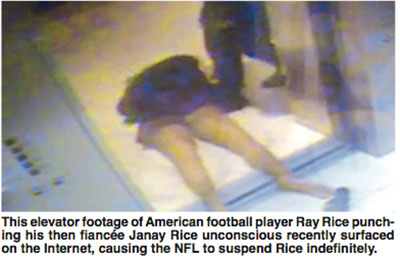A kidnapping, domestic violence, and the power of viral images
MANILA, Philippines - Last week, mysterious armed men cornered an SUV in the middle of EDSA in broad daylight. The shocking scene was captured on camera and uploaded to social media, where it instantly became viral. The ensuing outrage put pressure on the Philippine National Police to investigate what exactly happened, and within a week they were able to solve the mystery: nine policemen were identified and charged with abduction and robbery.
This story can be seen as a win for social media and its ability to curb crime through active citizenry. Unfortunately, this is also a case where the glass is overwhelmingly emptier than it is full — that to even say that it is somewhat full is to focus on a sad smidge of water.
The arrests that were made this week wouldn’t have been possible without that viral photo. Think about that for a minute: a crime committed blatantly during busy hours on the busiest highway in the busiest city in the country was left unchecked. There were neither police officers in the area nor any means for them to properly monitor the most important highway in Metro Manila. Fortunately, this happened during daytime, when there are hundreds of people roaming the streets with cellphones on hand. For every one kidnapping case solved via a viral photo, there are probably dozens more that transpire in the dark, in more thinly populated streets, away from the convenience of one-handed snapshots, and therefore imperceptible to the selective sense of urgency of the police.
The more we get used to having social media in our lives, the more we realize how many awful things happen outside our individual enclaves. We can only watch and cry helplessly as atrocities occur in the Middle East, or in the US, or in our own backyard. Sometimes we cry loud enough to force the authorities to act fast and provide a solution. In these instances, social media feels like an all-seeing eye, an omnipresence that gives us power in a social dynamic that often renders us powerless. But we do not see everything. We cannot see everything. And this fact becomes increasingly obvious every time we do actually see something.
DOMESTIC VIOLENCE
This week, violence against women became the hot button issue du jour in the US after elevator footage of American football player Ray Rice punching his fiancée Janay (who went on to marry him days later) surfaced on the Internet. A video of Rice dragging his unconscious fiancée on the floor already became public months before, but it only cost him a laughable two-game suspension from the National Football League. The new, more graphic one left no room for imagination and possible excuses from sports commentators (and there were plenty), and forced the NFL to suspend Rice indefinitely. The NFL had no choice, the sports media explained. The damage was now real and unsalvageable: anti-abuse hashtags #WhyIStayed and #WhyILeft had been trending for days and Rice had become an irredeemable PR nightmare overnight.
But nothing in that new video showed America what it didn’t already know: that Rice knocked Janay out cold. The NFL acting belatedly obviously reeks of hypocrisy — if not for a technology that allows millions of people to access damning video evidence on demand, the NFL would’ve gladly condoned violence against women.
We would love to think that social media is changing the way people act by forcing them to be conscious of their actions in a world that is becoming less private by the minute, that incidents like these make issues such as police criminality and violence against women more solvable, as if our collective awareness of isolated cases will somehow make deeply-ingrained societal diseases magically disappear. But all it really does is make people more image-conscious. Social media’s watchful eye isn’t necessarily making the world a better place; it’s only making it more PR-savvy (except for the MRT, which can’t even get the PR part right).
The biggest question in this age is no longer “Can we make a difference through social media?” It is now: “What do we do with all this awareness?” Everyone with common sense knows that terrible things keep happening in the world, and that these things are too complex to be eradicated through mere hashtags or a couple of solved cases by hypocritical authorities who wouldn’t give a damn had the world been offline. But what else can we do? How can a platform we only expected to use for cute images of cats change the way we participate in the physical world? How does that even begin? To get real solutions, we better start asking the real questions.
* * *
Tweet the author @ColonialMental.














